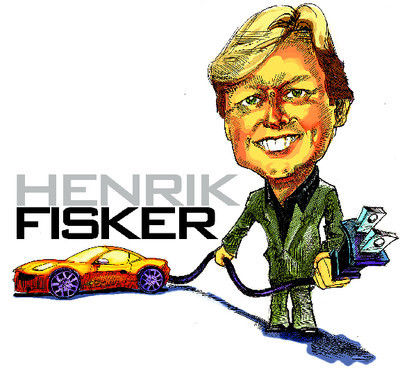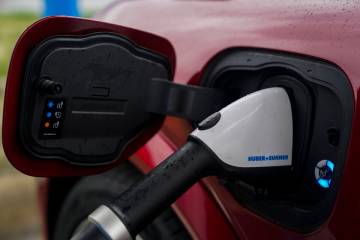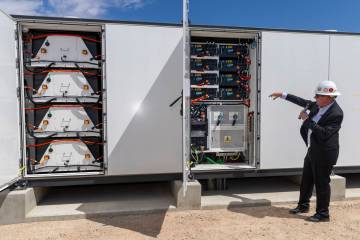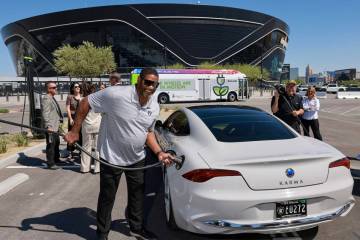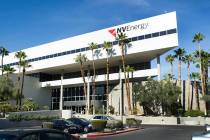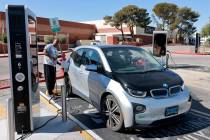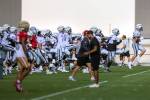Fisker’s gorgeous hybrid frightens Detroit
It's in an anonymous corporate office park in Irvine, Calif., on an anonymous little stretch of interstate sandwiched between Lake Forest and Fountain Valley on the San Diego Freeway, that the future of our auto industry is being hatched.
One of America's first planned cities is an appropriate backdrop for what's going on here.
Irvine was chosen as the fourth-best place to live in the United States in 2008. The Federal Bureau of Investigations said it has the lowest crime rate in the country. And the U.S. Census Bureau places it at No. 7 in America in terms of highest median income.
Irvine is cool. Irvine is calm. And Irvine might be home to an amazing revolution thanks to a man who is transforming the automotive world.
Henrik Fisker is making it happen, and if you know anything about the Danish-born car designer you would know if he's chosen to be flashy, then he's doing it in Technicolor.
Business Week magazine calls Fisker a "wunderkind," or a child prodigy.
Owners of the BMW Z8 still smile at Fisker's creative design in their driveway.
The electric world might be the next to call him a superstar.
With a flash of his pen, and some electrification, Fisker is single-handedly taking on Detroit's muscle, one plug-in car at a time.
About 2,500 miles west of the Motor City, Fisker is sketching creations for more variants of his Karma plug-in hybrid car. Eventually, it will spawn a family of hybrid vehicles: a four door, a two-door hardtop convertible (shown at January's Detroit auto show) and a family-oriented car.
The vehicles are drop-dead gorgeous -- works of art and emotion and high-end science.
That Fisker left a dream job as design director at Aston Martin to team up with his longtime friend Bernhard Koehler was shocking enough. Fisker's fingerprints were all over the Z8, the Aston DB9 coupe and V8 Vantage, to name a few icons.
But what's equally impressive is that since his move to form his own company -- Fisker Coachbuild in California -- he is going fast-forward into the world of hybrids and not gas-drinking sports cars.
"I think everyone can see where the world is going," Fisker told National Public Radio in an interview before the 2009 Detroit auto show. "And for me when you start seeing movie stars driving around in a Toyota Prius instead of a Ferrari, you realize something is definitely changing."
Fisker's rise and impact on the industry has been swift and remarkable.
Born August 10, 1963, in Denmark, he has worked in Germany, England and Southern California. Following his graduation from the Swiss campus of California's Art Center College of Design at age 26, he first worked at BMW's advanced design studio in Munich, Germany, eventually putting pen to paper on the BMW Z8. He joined Ford in 2001 and rose to director of Ford's Global Advanced Design Studio.
He had it all. But with Koehler he had an opportunity.
As a traditional coachbuilder, they were able to use platforms borrowed from his former automakers and then apply unique exteriors. The Fisker Tramonto was a hand-built sports car limited to 150 pieces using the base architecture of the Mercedes-Benz SL roadster. The Latigo CS used the architecture of the BMW 6-Series.
But the Karma is a $90,000 revolution, a luxury sports car that will take three hours to charge on a home electrical outlet. It should be ready by the end of this year.
"I have always loved sports cars and fast beautiful cars and what I have seen so far in hybrids were too many cars not always attractive and always slow," Fisker said. "So I thought if we're going to have a future for the automobile, we have to get back to why we fell in love with the car. Does it look good? Is it exciting? And I want to bring those elements into a green and environmental car."
Fisker has 1,300 preorders for the Karma with 22 dealers in the United States. The S (or Sunset) convertible will shine in driveways sometime in 2011. Fisker says he's ready for this latest challenge life has thrown his way: creating expensive cars for expensive tastes.
"There's room for every segment. There's room in the restaurant business for a filet steak as well as a burger," he said. "It doesn't mean everyone has to eat burgers."
The bottom line is simple.
"We think we can make a difference."
Anyone going to dare and doubt him?
Steven Reive is Wheelbase Communications' managing editor. He can be reached on the Web at www.wheelbase.ws/mailbag.html. Wheelbase supplies automotive news and features to newspapers across North America.



